Photo

Brochantite
Brochantite is a sulfate mineral, one of a number of cupric sulfates. Its chemical formula is Cu4SO4(OH)6. Formed in arid climates or in rapidly oxidizing copper sulfide deposits, it was named by Armand Lévy for his fellow Frenchman, geologist and mineralogist A. J. M. Brochant de Villiers. Crystals of brochantite can range from emerald green to black-green to blue-green, and can be acicular or prismatic. Brochantite is often associated with minerals such as malachite, azurite, and chrysocolla, and may form pseudomorphs with these minerals. The mineral is found in a number of locations around the world, notably the southwestern United States (especially Arizona), Serifos in Greece and Chile. Brochantite is a common corrosion product on bronze sculptures located in urban areas, where atmospheric sulfur dioxide (a common pollutant) is present. Brochantitie forms mainly in exposed areas where weathering prevents accumulation copper ions and enhancement in the acidity of water films. In sheltered areas, the main corrosion product is antlerite.
More details Android, Windows
0 notes
Photo
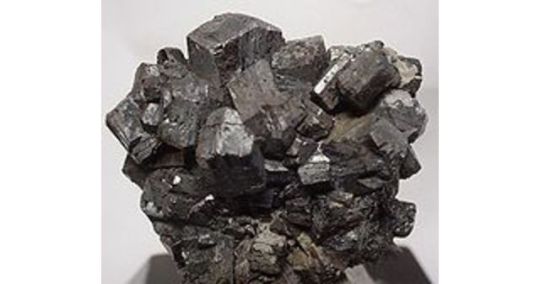
Braunite
Braunite is a silicate mineral containing both di- and tri-valent manganese with the chemical formula: Mn2+Mn3+6[O8|SiO4]. Common impurities include iron, calcium, boron, barium, titanium, aluminium, and magnesium. Braunite forms grey/black tetragonal crystals and has a Mohs hardness of 6 - 6.5. It was named after the Wilhelm von Braun (1790–1872) of Gotha, Thuringia, Germany. A calcium iron bearing variant, named braunite II (formula: Ca(Mn3+,Fe3+)14SiO24), was discovered and described in 1967 from Kalahari, Cape Province, South Africa.
More details Android, Windows
0 notes
Photo

Brazilianite
Brazilianite, whose name derives from its country of origin, Brazil, is a typically yellow-green phosphate mineral, most commonly found in phosphate-rich pegmatites. It occurs in the form of perfect crystals grouped in druses, in pegmatites, and is often of precious-stone quality. One noted deposit of brazilianite is in the surroundings of Conselheiro Pena, in Minas Gerais, Brazil. Some of these are found on leaves of muscovite with their strong silvery glitter, ingrown in their parent rock. The crystals, dark greenish-yellow to olive-green, sometimes measure up to 12 cm (4.7 in) in length and 8 cm (3.1 in) in width. Crystals of similar shape and dimensions have been discovered in another deposit in Minas Gerais, near Mantena, but they lack the perfection of the crystal form.[citation needed] Many brazilianites found in mineral collections originated from the Palermo and the Charles Davis mines in Grafton County, New Hampshire.
More details Android, Windows
0 notes
Photo
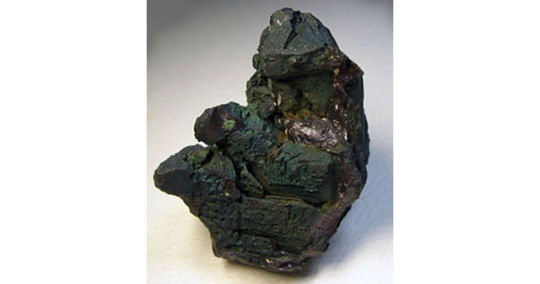
Bornite
Bornite, also known as peacock ore, is a sulfide mineral with chemical composition Cu5FeS4 that crystallizes in the orthorhombic system (pseudo-cubic).
More details Android, Windows
0 notes
Photo
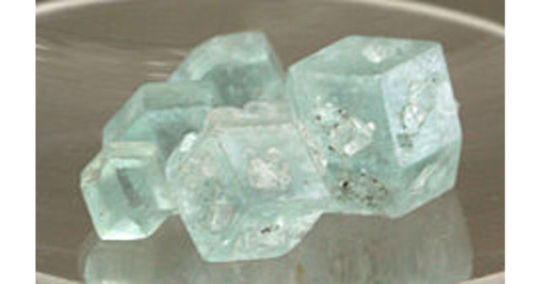
Boracite
Boracite is a magnesium borate mineral with formula: Mg3B7O13Cl. It occurs as blue green, colorless, gray, yellow to white crystals in the orthorhombic - pyramidal crystal system. Boracite also shows pseudo-isometric cubical and octahedral forms. These are thought to be the result of transition from an unstable high temperature isometric form on cooling. Penetration twins are not unusual. It occurs as well formed crystals and dispersed grains often embedded within gypsum and anhydrite crystals. It has a Mohs hardness of 7 to 7.5 and a specific gravity of 2.9. Refractive index values are nα = 1.658 - 1.662, nβ = 1.662 - 1.667 and nγ = 1.668 - 1.673. It has a conchoidal fracture and does not show cleavage. It is insoluble in water (not to be confused with borax, which is soluble in water). Boracite is typically found in evaporite sequences associated with gypsum, anhydrite, halite, sylvite, carnallite, kainite and hilgardite. It was first described in 1789 for specimens from its type locality of Kalkberg hill, Lüneburg, Lower Saxony, Germany. The name is derived from its boron content (19 to 20% boron by mass).
More details Android, Windows
0 notes
Photo

Bischofite
Bischofite (bischofit) is a hydrous magnesium chloride mineral with formula MgCl2·6H2O. It belongs to halides and is a sea salt concentrate dated from the Permian Period (nearly 200 million years ago). Bischofite is ecologically pure natural magnesium poly-mineral with a unique composition. It contains many macro- and micro-elements vital for human health, in much higher concentrations than can be found in sea or ocean salt. The main bischofit compound is magnesium chloride (up to 350 g/L), moreover, it contains about 70 other elements as impurities, including potassium, sodium, bromine, boron, calcium, silicon, molybdenum, silver, zinc, iron and copper.
More details Android, Windows
0 notes
Photo
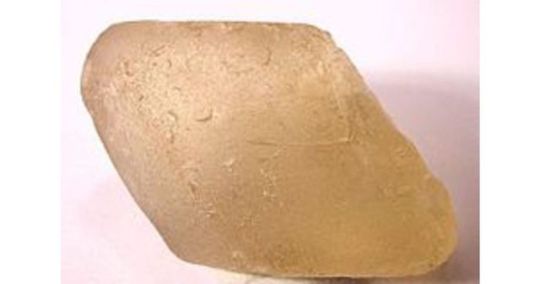
Bytownite
Bytownite is a calcium rich member of the plagioclase solid solution series of feldspar minerals. It is usually defined as having "%An" between 70 and 90. Like others of the series, bytownite forms grey to white triclinic crystals commonly exhibiting the typical plagioclase twinning and associated fine striations. The specific gravity of bytownite varies between 2.74 and 2.75. The refractive indices ranges are nα=1.563 – 1.572, nβ=1.568 – 1.578, and nγ=1.573 – 1.583. Precise determination of these two properties with chemical, X-ray diffraction, or petrographic analysis are required for identification.
More details Android, Windows
0 notes
Photo
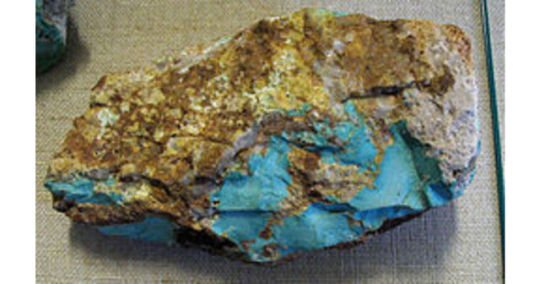
Turquoise
For other uses, see Turquoise (disambiguation). Turquoise is an opaque, blue-to-green mineral that is a hydrated phosphate of copper and aluminium, with the chemical formula CuAl6(PO 4)4(OH)8·4H 2O. It is rare and valuable in finer grades and has been prized as a gem and ornamental stone for thousands of years owing to its unique hue. In recent times, turquoise has been devalued, like most other opaque gems, by the introduction onto the market of treatments, imitations, and synthetics. The substance has been known by many names, but the word turquoise dates to the 17th century and is derived from the French turques for "Turks" because the mineral was first brought to Europe from Turkey, from mines in the historical Khorasan Province of Persia. Pliny the Elder referred to the mineral as callais and the Aztecs knew it as chalchihuitl.
More details Android, Windows
0 notes
Photo
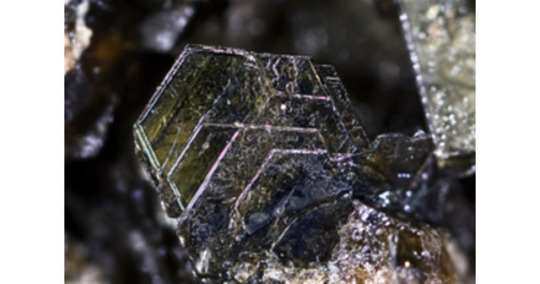
Biotite
Biotite is a common phyllosilicate mineral within the mica group, with the approximate chemical formula K(Mg,Fe) 3AlSi 3O 10(OH) 2. More generally, it refers to the dark mica series, primarily a solid-solution series between the iron-endmember annite, and the magnesium-endmember phlogopite; more aluminous end-members include siderophyllite. Biotite was named by J.F.L. Hausmann in 1847 in honor of the French physicist Jean-Baptiste Biot, who, in 1816, researched the optical properties of mica, discovering many properties. Biotite is a sheet silicate. Iron, magnesium, aluminium, silicon, oxygen, and hydrogen form sheets that are weakly bound together by potassium ions. It is sometimes called "iron mica" because it is more iron-rich than phlogopite. It is also sometimes called "black mica" as opposed to "white mica" (muscovite) – both form in some rocks, and in some instances side-by-side.
More details Android, Windows
0 notes
Photo
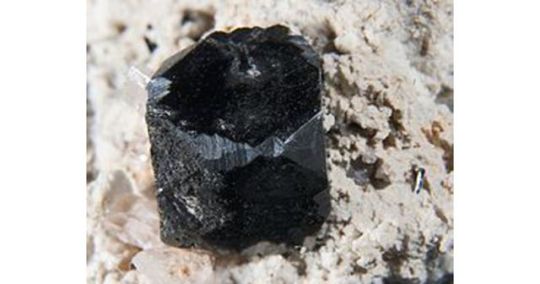
Bixbyite
Bixbyite is a manganese iron oxide mineral with chemical formula: (Mn,Fe)2O3. The iron/manganese ratio is quite variable and many specimens have almost no iron. It is a metallic dark black with a Mohs hardness of 6.0 - 6.5. It is a somewhat rare mineral sought after by collectors as it typically forms euhedral isometric crystals exhibiting various cubes, octahedra, and dodecahedra. It is commonly associated with beryl, quartz, spessartine, hematite, pseudobrookite, hausmannite, braunite and topaz in pneumatolytic or hydrothermal veins and cavities and in metamorphic rocks. It can also be found in lithophysal cavities in rhyolite. Typical localities are Jhabua and Chhindwara districts, India and the Thomas Range in Juab County, Utah. It is also reported from San Luis Potosi, Mexico; northern Patagonia, Argentina; Girona, Catalonia, Spain; Sweden and South Africa. Bixbyite was named for the American mineralogist Maynard Bixby (1853–1935), responsible for its discovery in 1897. It should not be confused with bixbite, a red form of beryl; to avoid confusion, this name has been deprecated from the CIBJO and the IMA.
More details Android, Windows
0 notes
Photo

Bertrandite
Bertrandite is a beryllium sorosilicate hydroxide mineral with composition: Be4Si2O7(OH)2. Bertrandite is a colorless to pale yellow orthorhombic mineral with a hardness of 6-7. It is commonly found in beryllium rich pegmatites and is in part an alteration of beryl. Bertrandite often occurs as a pseudomorphic replacement of beryl. Associated minerals include beryl, phenakite, herderite, tourmaline, muscovite, fluorite and quartz. It, with beryl, are ores of beryllium. It was discovered near Nantes, France in 1883 and named after French mineralogist, Emile Bertrand (1844–1909).
More details Android, Windows
0 notes
Photo
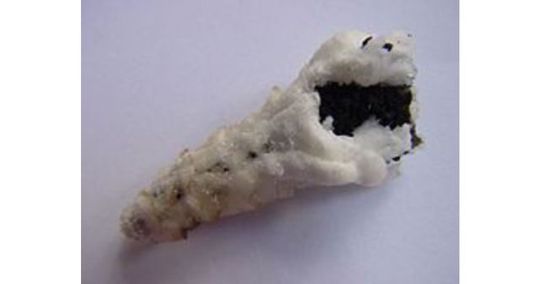
Birnessite
Birnessite (Na0.3Ca0.1K0.1)(Mn4+,Mn3+)2O4 · 1.5 H2O is an oxide mineral of manganese along with calcium, potassium and sodium. It has a dark brown to black color with a submetallic luster. It is also very soft, with a Mohs hardness of 1.5. Birnessite is formed by precipitation in lakes, oceans and groundwater and is a major component of desert varnish and deep sea manganese nodules.
More details Android, Windows
0 notes
Photo
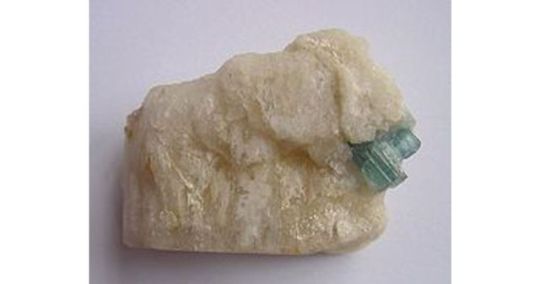
Beryllonite
Beryllonite is a rare sodium beryllium phosphate mineral with formula NaBePO4. The tabular to prismatic monoclinic crystals vary from colorless to white or pale yellowish, and are transparent with a vitreous luster. Twinning is common and occurs in several forms. It exhibits perfect cleavage in one direction. The hardness is 5.5 to 6 and the specific gravity is 2.8. Refractive indices are nα = 1.552, nβ = 1.558 and nγ = 1.561. A few crystals have been cut and faceted, but, as the refractive index is no higher than that of quartz, they do not make very brilliant gemstones. It occurs as a secondary beryllium mineral in granitic and alkalic pegmatites. It was first described from complex crystals and as broken fragments in the disintegrated material of a granitic vein at Stoneham, Oxford County, Maine where it is associated with feldspar, smoky quartz, beryl and columbite. It was discovered by James Dwight Dana in 1888, and named beryllonite for its beryllium content.
More details Android, Windows
0 notes
Photo
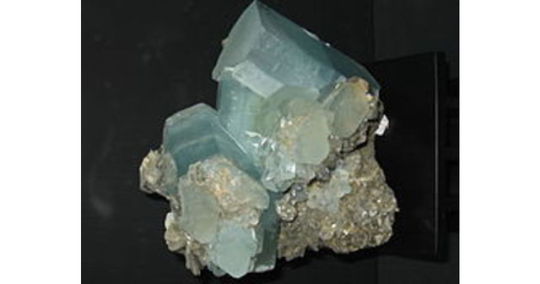
Beryl
"Beril" and "Heliodor" redirect here. For the character in Tolkien's legendarium, see House of Bëor. For the given names, see Beryl (given name) and Heliodorus (given name). For the Sailor Moon villain, see Queen Beryl. For other uses, see Beryl (disambiguation). Beryl is a mineral composed of beryllium aluminium cyclosilicate with the chemical formula Be3Al2(Si O3)6. Well known varieties of beryl include emerald and aquamarine. Naturally occurring, hexagonal crystals of beryl can be up to several meters in size; terminated crystals are relatively rare. Pure beryl is colorless, but it is frequently tinted by impurities; possible colors are green, blue, yellow, red, and white.
More details Android, Windows
0 notes
Photo
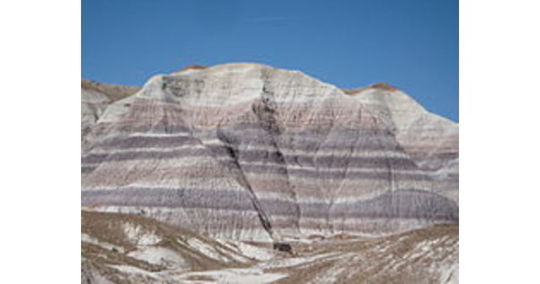
Bentonite
Bentonite is an absorbent aluminium phyllosilicate clay consisting mostly of montmorillonite. It was named by Wilbur C. Knight in 1898 after the Cretaceous Benton Shale near Rock River, Wyoming. The different types of bentonite are each named after the respective dominant element, such as potassium (K), sodium (Na), calcium (Ca), and aluminium (Al). Experts debate a number of nomenclatorial problems with the classification of bentonite clays. Bentonite usually forms from weathering of volcanic ash, most often in the presence of water. However, the term bentonite, as well as a similar clay called tonstein, has been used to describe clay beds of uncertain origin. For industrial purposes, two main classes of bentonite exist: sodium and calcium bentonite. In stratigraphy and tephrochronology, completely devitrified (weathered volcanic glass) ash-fall beds are commonly referred to as K-bentonites when the dominant clay species is illite. In addition to montmorillonite and illite another common clay species that is sometimes dominant is kaolinite. Kaolinite-dominated clays are commonly referred to as tonsteins and are typically associated with coal.
More details Android, Windows
0 notes
Photo

Benitoite
Benitoite (pronunciation: /bɛn.ˈi.toʊ.aɪt/) is a rare blue barium titanium silicate mineral, found in hydrothermally altered serpentinite. Benitoite fluoresces under short wave ultraviolet light, appearing bright blue to bluish white in color. The more rarely seen clear to white benitoite crystals fluoresce red under long-wave UV light. It was first described in 1907 by George D. Louderback, who named it benitoite for its occurrence near the headwaters of the San Benito River in San Benito County, California. Benitoite occurs in a number of sites, but gemstone quality material has only been found in California. In 1985 benitoite was named as the official state gem of California. Benitiote has a rare 5 pointed crystal form, and an even rarer 6 pointed form, "star of David", with about 24 samples known.
More details Android, Windows
0 notes
Photo
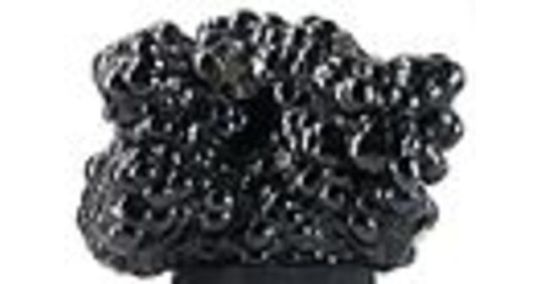
Boehmite
Boehmite or böhmite is an aluminium oxide hydroxide (γ-AlO(OH)) mineral, a component of the aluminium ore bauxite. It is dimorphous with diaspore. It crystallizes in the orthorhombic dipyramidal system and is typically massive in habit. It is white with tints of yellow, green, brown or red due to impurities. It has a vitreous to pearly luster, a Mohs hardness of 3 to 3.5 and a specific gravity of 3.00 to 3.07. It is colorless in thin section, optically biaxial positive with refractive indices of nα = 1.644 - 1.648, nβ = 1.654 - 1.657 and nγ = 1.661 - 1.668. Boehmite occurs in tropical laterites and bauxites developed on alumino-silicate bedrock. It also occurs as a hydrothermal alteration product of corundum and nepheline. It occurs with kaolinite, gibbsite and diaspore in bauxite deposits; and with nepheline, gibbsite, diaspore, natrolite and analcime in nepheline pegmatites. It was first described by J. de Lapparent in 1927 for an occurrence in the bauxites of Mas Rouge, Les Baux-de-Provence, France, and named for the Bohemian-German chemist Johann Böhm (1895–1952) who carried out X-ray studies of aluminium oxide hydroxides in 1925 (and not for the German geologist Johannes Böhm (1857–1938) as often stated).
More details Android, Windows
0 notes